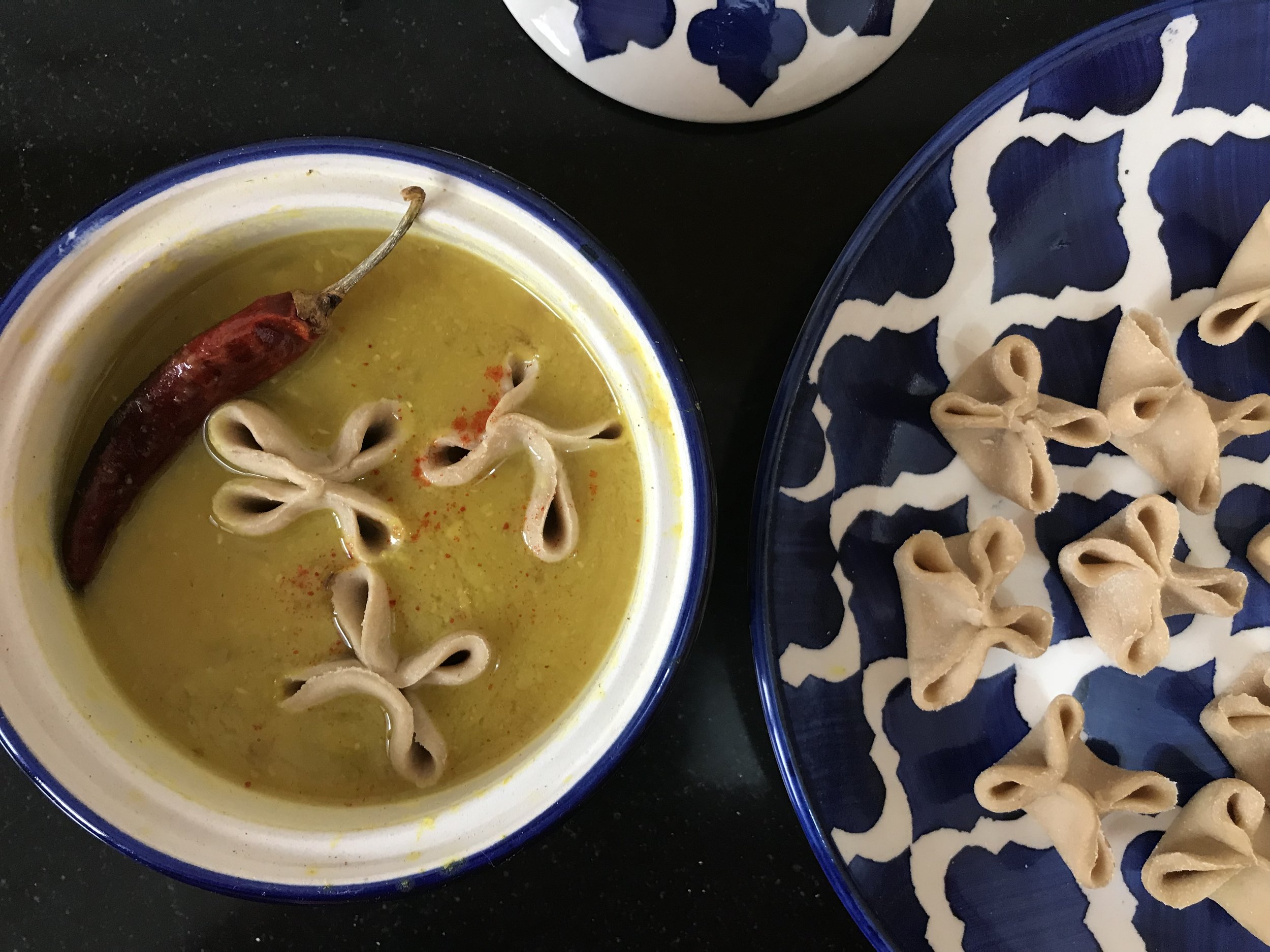Bihari Dal ki Dulhan is the Ultimate Comfort Dish

The Bride’s Veil is a Bihari one-pot meal that is as comforting as it is poetic.
While pulses are a beloved pantry essential around the world, they are cooked with unmatched culinary skill in India. Dal, made from pulses, is a staple in most Indian homes, and cuts across all economic brackets.
Dal pithi, dal pithori, or dal ki dulhan, is a dish that’s popular in Bihari cuisine. The dish gets its curious name from the hollow, whole-wheat dumpling that looks like the veil of a bride, or dulhan. The shape of the dumpling differs, and its name with it. If the dumplings are flat, they are called dal pithi; if stuffed, they are referred to as dal ki dulhan.
One thing that all variants have in common however, is that it makes a hearty one-pot meal, and requires no more embellishment than a robust mango pickle. The soupy consistency of the dal, and the soaked, spongy dumplings simmered in a generous volume of ghee, garlic and onions, makes for a delicious, restorative dish.
Recipe for Dal ki Dulhan
Ingredients
For the dal
½ cup arhar dal
2 tbsp moong dal
2 tbsp masoor dal
½ tsp turmeric powder
Salt to taste
For the dumplings
1 cup whole wheat flour (atta)
Water as needed
For the tadka
2 tbsp ghee
1 bay leaf
1 dried red chilli
1 cinnamon stick
3-4 black pepper
2-3 cloves
Pinch of cumin
1/4 cup thinly sliced onions
Pinch of asafoetida (you can avoid if you do not like the taste of hing)
Method:
Mix the wheat flour with enough water to make a firm dough, and set aside.
In a pressure cooker, add all the ingredients for the dal with 1.5 cup of water and pressure cook on a high flame.
After the first whistle, lower the flame and pressure cook for 3-4 more whistles. This helps the dal come to a thick soupy consistency.
Meanwhile, divide the dough into small balls and roll each into small pooris.
Alternatively, you can make the rounds by rolling the dough into a big circle and cutting out small rounds using a small bowl or glass.
To shape the dumpling, lift opposite sides and bring together at the centre, then lift the other two ends and bring it to the centre, giving it a flower-like shape. (Refer to image above).
The hollow shape of the flowers allows the dal to enter the dumpling and become delightfully chewy.
After the dal is cooked, open the pressure cooker. If the dal has thickened too much, you can add a little water until it reaches the consistency of soup.
Gently lower the dumplings in.
Simmer the dal for another 10-12 minutes on medium flame, until the dumplings are cooked through.
In a small kadai, heat the ghee and add the onions, followed by the rest of the ingredients and remove from flame after a minute.
Pour over the dal.
Serve hot.
Ruchi Shrivastava is a software engineer by day, and at home, a storyteller by night.
ALSO ON THE GOYA JOURNAL








